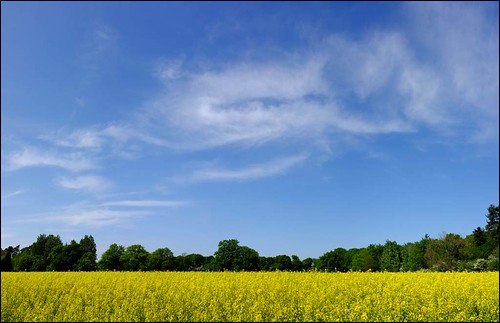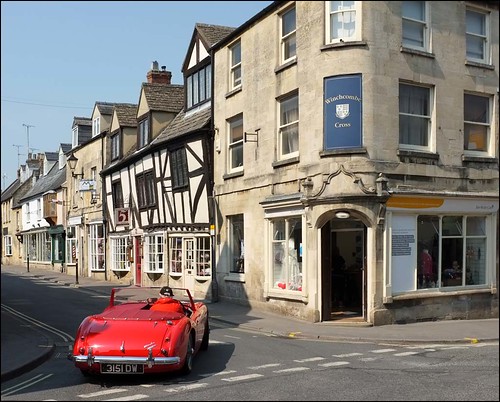A much less problematic day with the X100. Concerning the jpgs only problem yesterday I'm sure Corwin is right when he suggests I probably hit the RAW button, which changes from jpg to raw and vice versa. I did make sure that everything was as it should be before starting taking pictures yesterday, and everything went smoothly.
So after these few days, what are my conclusions? Well if you've read the rest, its going to be pretty obvious.
PROS
Great sensor, really impressive high ISO performance.
Great lens, very sharp clean results.
I really enjoy using the optical viewfinder, and though not particularly essential for what I do, its a pleasure to use and very much preferable to just using a rear screen or some of the less than impressive viewfinders available for some of the CSC's I use.
Really impressive files, with great colour and clarity. No dust spots. Very impressive jpgs.
Has surprisingly good video output.
AF slow(ish) but accurate
Well put together (mostly) and certainly stylish with good handling (again mostly)
CONS
Less than ideal menu setup.
Some controls, particularly the OK button, difficult to use.
Confusing layout of function selection, and a tendency to reset parameters.
A lack of thought about the camera software, which can make it easy to make mistakes. Probably the most "difficult" camera I've used. Not a camera you can pick up and start shooting with. It does need some understanding of its particular "quirks"
Using the camera assumes a fair bit of photographic knowledge and experience, though in some ways this could be seen as a PRO.
Starting up takes a while. Starting up from "sleep" is ridiculously slow and slower than starting up from scratch. To avoid missed shots I leave it on all the time, with consequent battery drain.
I do have some concerns about how the whole thing will hold up under prolonged heavy use. On a couple of occasions it has just become totally unresponsive and I've had to switch it off and on again. There are also reports from other sources of all sorts of other glitches.
(Please note I have made no comments about the manual focus performance. As I said at the beginning this is not a review, and since I have no intention of using manual focus on it I haven't even tried it. There are many other articles about it that discuss this.)
Though the CON list may seem somewhat long, much of it is different versions of the same thing, and involves the software. Hopefully Fuji can update the firmware soon to take account of the problems that many are experiencing. It is a shame that this is less than ideal, because if it was better then it would have been that rare case of a camera living up to the "hype".
In terms of results, it is a pretty special camera. It has changed my expectations of what an APS-C sensor can do. 12MP only, but the images are capable of substantial interpolation. Fixed lens only, but a very good lens indeed. Expensive, but quality usually isn't cheap, and this is a camera plus a fast prime lens.
Do I prefer it to a Leica X1? Yes I do. Its faster than the X1, more versatile, has more useful features (Particularly the viewfinder) and is better in low light. I also prefer the results from the Fuji lens.
Do I prefer it to m4/3 and other CSC's? Well allowing for the fact that its a single lens camera, the answer is probably yes too. Obviously not as useful or versatile as something like a GH2, but the pictures it produces do look wonderful. Sharp, beautiful colour, very little CA and fringing.
To me the high ISO performance is the outstanding feature. This is simply stunning. It allows quality images to be produced in all sorts of situations, previously impossible. When I realised it was producing images at ISO 800 that are sharper and less noisy than m4/3 can produce at ISO 200 I was completely sold on it. Where that leaves all my other cameras, I have no idea.
From the picture below you will see what I currently have. How many of these it makes reduntant I don't know.
Would I recommend it? Well yes but with some warnings. If you are thinking of getting one, you have to be sure that you can cope with the fixed lens. I know personally there are times when I'm going to find it restricting. As I, and others, have indicated, its not an "easy" camera and it can be very frustrating to use. Its also not particularly quick in use, though I'm quite happy with the AF performance as I prefer accuracy over speed.
For me the bottom line is always the image quality and the X100 is just superb in this regard. This quality, at all ISO's has previously only been possible in a large, bulky heavy DSLR. If you want the kind of results you get from a Nikon D3 in a compact camera body, this is for you, though don't expect D3 speed and functionality. The X100 isn't intended to be a camera that does everything. However it succeeds in its intention. Fuji have dubbed it a professional photographers compact camera, and while I'm not sure about how their software design can be described as professional, the results would I'm sure satisfy anyone who is interested in producing quality images. You certainly don't have to be a professional to enjoy the results the X100 produces, even though its sometimes harder work than it should be to get those results.








































